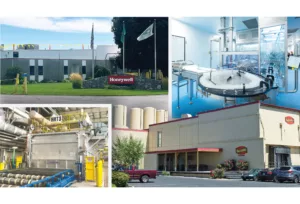
Home » Guest Commentary: Washington's agriculture sector merits constant appreciation
Guest Commentary: Washington's agriculture sector merits constant appreciation
~
May 11, 2023
Some would argue that spring is the most wonderful time of the year in Washington. Throughout our state, fruit trees blossom, vibrant tulip fields bloom, and colorful lentils carpet the fields on the Palouse. It is when photographers and sightseers have a field day.
While spring is eye-catching, it is the late summer and fall when our state reaps the benefits of the harvest. It is when crops yield “green” cash in markets around the world.
While Washington ranks 14th in agriculture revenue nationwide, our state is a leader in apples, cherries, wine, dairy products, beef, wheat, and potatoes.
Agriculture adds $51 billion a year to our state’s GDP. It makes up more than 13% of our economy accounting for 160,000 Washington jobs. Nine out of 10 farms are family-owned and have less than 180 acres.
Our state is blessed with rich soil, abundant water, low-cost hydropower, a favorable climate, efficient transportation, and hard-working people. Washington has more than 300 varieties of crops and is second only to California in crop diversity. However, a key difference is Washington has an abundance of water for agriculture unlike California and Arizona which are forced to curtail irrigation.
Our farmers support more than 200 food processors. In 2019, food processing added $22 billion to our state’s economy, and if you are ordering french fries in any fast-food restaurant around the world, they are likely processed in Washington.
When the beautiful apple and cherry blossoms turn into fruit, Washington leads the nation in production. Our state grows two-thirds of the country’s apples, which are the most consumed fruit in America. Our state has long been the top apple exporter, and in 2021, generated $643 million from foreign buyers.
In recent years, cherry production has surged. In 2022, the Pacific Northwest produced 73% of the fresh U.S. sweet cherry crop by volume. Of the 13.3 million 20-bound boxes picked, three-quarters were trucked to Canada or flown to Asia.
Surprisingly, while Idaho is famous for its potatoes, Washington has a large potato crop. Between the two states, they account for 44% of the nation’s production.
Integral to our region’s agriculture and seaports is our Columbia-Snake River barge system. It is a super water highway for moving wheat and other agricultural products from farm to market.
Nearly, 10% of all U.S. wheat is exported through the Columbia Snake River System. Growers from 11 states barge grain down the Snake and Columbia rivers—more than 14 million metric tons of wheat in 2017.
There have been renewed efforts to breach the four lower Snake River dams which, if successful, would destroy the system.
WPC produced reports which pointed out in recent legislative sessions, bills to increase taxes and regulations would hurt farmers and those who depend on agriculture.
Greenhouse gas emissions regulations and proposals to eliminate natural gas would hit fertilizer makers and food processing facilities.
As pleasing to our eyes as spring blossoms are, without a strong agriculture economy where farmers, food processors, and workers can prosper, agriculture disappears.
Washington and our Pacific Northwest neighbors can build on our agriculture and food processing base only if our elected officials and government regulators have reasonable (workable) regulations, taxes, and fees.
Agriculture is the backbone of America—something to remember year-round.
Don C. Brunell is a business analyst, writer, and retired president of the Association of Washington Business. He now lives in Vancouver, Washington and can be contacted at [email protected].
Latest News
Related Articles


_web.webp?t=1764835652)
